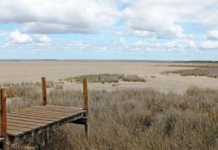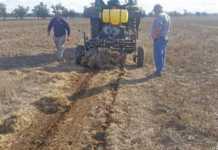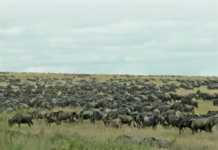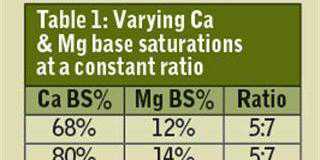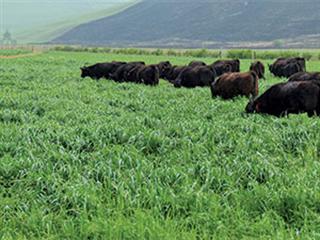
I started promoting legume pastures in the late 1970s. At the time, I was employed by an eastern Free State co-op to help farmers develop more profitable production systems.
We had been through a process of taking low-potential soils out of cash-crop production and planting them to grass pastures, a strategy that worked well at first. But as the area under grass grew, so did the burdensome nitrogen bill.
After reading a series of articles about legume pastures by Dr VD Wassermann of the Department of Agriculture, I realised legumes would help reduce the high cost of nitrogen.
Wassermann went to some lengths to help me in my quest for less costly pastures. (At the time we both adhered to the soil science paradigm that dictated that legumes grow best on soils that have a near-neutral pH.)
Trial plantings got underway. Soil samples were taken and lime was applied wherever necessary, but the results were inconsistent. Soils were fully corrected in every way, yet some plantings failed miserably.
This problem plagued me for years and hindered progress in developing low-cost pastures. It was only after I started applying the Albrecht approach to soil science that the success rate improved dramatically.
Calcium
In this approach, lime is applied to build soil calcium to a specific level. All other macro and micro minerals are also built up to a specific level. Once this balance is achieved, soil pH will be at the desired level. Dr William Albrecht was able to show why some soils failed to produce good legume pastures: the soil can have the desired pH, yet be seriously lacking in calcium.
The main legumes we used in our trials – lucerne, crown vetch and bird’s-foot trefoil – all contained more than double the amount of calcium that grass has. They demand soils that are rich in calcium.
Nitrogen
Henry du Preez, who farms in this eastern Free State region, now has more than 300ha of excellent legume-based pastures that do not require any nitrogen fertiliser. By planting legumes Henry has, in effect, built himself a nitrogen factory.
Potash
Dr Alfred Kidd shook me out of the misconception that all green pastures are healthy. He wanted to go beyond simply treating symptoms and investigate the causes of various cattle diseases. In the Tsitsikamma, where Kidd was based, the number of inseminations per conception was increasing. A decline in reproductive efficiency may be a sign of nutrional problems.
Analysis of blood samples taken from several herds established that blood potash levels were very high. These levels were associated with retained placentas, which resulted in uterine infections and delayed conception.
Forage analysis revealed the reason for the high blood potash. Forage potassium levels invariably exceeded 3%. (Albrecht expert Gary Zimmer’s norm for forage potash is 1,5% to 2%.) Reducing potassium fertiliser did not have the desired effect.
Deficiency
Kidd got a vital clue when a bone biopsy from a lame heifer showed the that the animal suffered from osteoporosis, a condition caused by calcium deficiency. I then conducted research on how to increase the calcium content of forage. I used a randomised block trial with 36 plots on three different pastures and took leaf samples from every plot for four months (over 400 samples).
Not one of the samples showed the slightest increase in calcium after fertilisation. When laying out the trials, I included a test with limestone ammonium nitrate at various rates. This gave me valuable insight into the problem. On all three pastures, the leaf potassium levels rocketed upwards with every increment of nitrogen until a turning point was reached (see Graph 1).

The Albrecht system explains that when calcium is insufficient in the soil, a plant will take up potassium instead, especially when it is forced to grow by the application of high levels of nitrogen.
Standards
Gary Zimmer’s forage standards call for a calcium level of 1,5%. Most of the samples that Kidd examined contained just over 0,3% calcium. It’s unlikely that a farmer will ever achieve the Zimmer calcium standards unless the soil is balanced according to the Albrecht system and multi-species pastures contain a high percentage of legumes on a dry matter basis.
To see how healthy soil produces healthy forage and healthy cows, there’s no better place to go than Otters Creek, Gary Zimmer’s organic dairy farm.
No-till
The Albrecht system will help to correct soils with excessive levels of magnesium and a deficit of calcium. Such soils have very serious problems. They invariably lack air- and water-holding capacity, and are hard and costly to work.
To attempt no-till with these soils is to invite disaster. Gary Zimmer, who heads up Midwest Bio-Ag in the USA, says: “You have to earn the right to no-till.” By this he means that soils must first be corrected.
Step one is to lime them correctly. After this, soil life must be encouraged – there’s very little life in soils that don’t breathe or take in enough water.
The correction of high magnesium soils is where conventional soil science falls short, in my opinion. Soils with excessive levels of magnesium usually have an acceptable pH and so liming is seldom recommended.
Furthermore, in cases where lime is required, soil scientists say that it doesn’t matter what lime you use, but the application of dolomitic lime, which contains magnesium, to soils that already have excessive magnesium, will further reduce their air and water holding capacity and make them more expensive to cultivate.
The most effective way to reduce magnesium is to apply calcitic lime, which has a high calcium content and a low magnesium content.
Magnesium
Albrecht defined a number of rules pertaining to the problem, which include the use of lime, gypsum and sulphur. By applying these rules, soils with excessive levels of magnesium can become highly productive. Pongola soils are high in magnesium. Irrigated sugarcane is the most important crop in this region. After ripping and ploughing, the loosened soil is able to hold air and water, but after a few years it gradually reverts to its original tight structure. Water run- off increases and yields decline. Replanting sugarcane every six to eight years is standard.
Ernst Höll was on the point of ploughing up one of his lands when he was advised by biological farming consultant Ronald Schroder to lime. Ronald had been trained in the DRIS system, which is similar to the Albrecht system when it comes to soil liming. The production histories of the land, as well as further mineral corrections, are set out above. Ernst took over the management of the farm in 2000, which explains the lack of data on nitrogen fertilisation in the preceding three years.
As can be seen, the crop is still producing highly profitably after 16 years. This is an all-time record for Pongola.
Profit analysis on sugar farm
From 2003 to 2012, the cost of applying lime and micronutrients to correct the soil was R6 285/ ha, an average R628/ ha/year. The 92 t/ ha produced in 2002 (prior to application of the Albrecht prescripts) was accepted as the benchmark yield.

Yield increases above 92t were used to calculate additional returns achieved by correct soil mineralisation. Annually the average increase was 17,5t/ha which amounted to 175t/ ha. The income per ton of cane delivered was calculated at R330 after deducting cutting and delivery costs. The income per hectare derived from increased yields (above 92t) amounted to an average of R5 775/ha. This was achieved at an additional cost of only R628/ha. The annual return on soil mineral correction was a staggering 919%.
John Fair is a leading expert on pastures.

